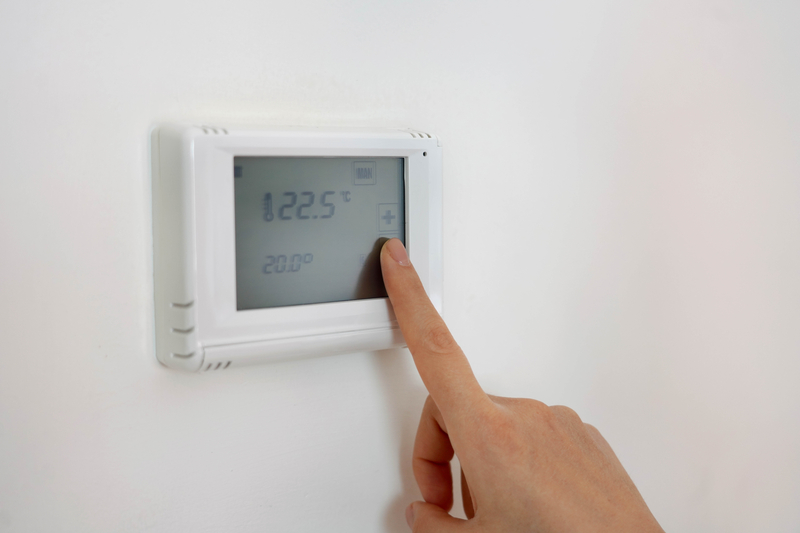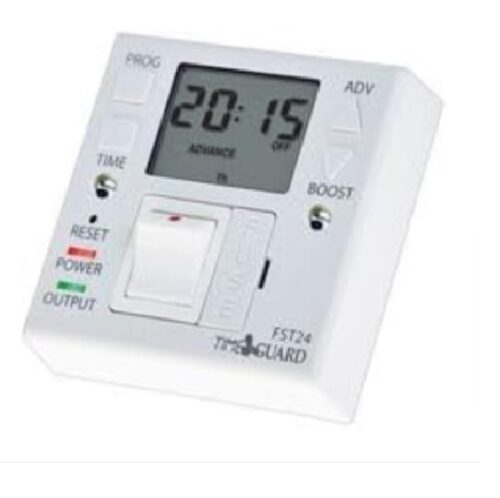
With the rising cost of energy, finding ways to save on energy bills has become more important than ever. By making a few adjustments in your home and lifestyle, you can significantly reduce your energy consumption and lower your monthly expenses. In this guide, we’ll explore various methods to save energy costs, from simple changes to more significant investments, all explained in straightforward terms.
1. Improve Your Home’s Insulation
Proper insulation is one of the most effective ways to reduce energy consumption. It helps maintain a consistent temperature in your home by reducing the amount of heat that escapes in winter and enters in summer. This reduces the need for heating and cooling, which are major contributors to energy costs.
- Insulate Your Loft and Walls: Insulating your loft and walls can prevent heat from escaping your home. This can reduce your heating costs by up to 25%.
- Seal Gaps and Cracks: Gaps around windows, doors, and floors allow cold air to enter and warm air to escape. Sealing these gaps with weatherstripping or caulk can reduce energy loss.
Product Suggestion: Stormguard Self-Adhesive Foam Draught Seal
2. Upgrade to Energy-Efficient Windows
Windows are a common source of heat loss in many homes. Upgrading to energy-efficient windows can significantly reduce heat transfer, keeping your home warmer in the winter and cooler in the summer.
- Double or Triple Glazing: These windows have multiple layers of glass with air or gas-filled spaces in between, which provide better insulation compared to single-pane windows.
- Low-E Coatings: Low-emissivity (Low-E) coatings on windows reduce the amount of infrared and ultraviolet light that comes through the glass without compromising the amount of visible light.
Product Suggestion: Window Insulation Film Kit
3. Install a Programmable Thermostat
A programmable thermostat allows you to set your heating and cooling systems to operate only when needed. By reducing the time your system runs, you can lower your energy consumption.
- Set Schedules: Program your thermostat to lower the temperature when you’re not at home or when you’re asleep. For example, setting the thermostat 1°C lower can reduce your heating bill by up to 10%.
- Zoning Systems: Some programmable thermostats allow you to control the temperature of different areas of your home independently, so you only heat or cool the rooms you’re using.
Product Suggestion: Honeywell Home T6R Smart Thermostat
4. Switch to LED Lighting
Lighting accounts for a significant portion of your energy bill, especially if you use incandescent bulbs. Switching to energy-efficient LED bulbs can lead to substantial savings.
- Energy Savings: LED bulbs use up to 85% less energy than traditional incandescent bulbs and can last up to 25 times longer.
- Smart Lighting: Consider smart LED bulbs that can be controlled remotely or set on schedules, allowing you to turn off lights when not needed.
Product Suggestion: Philips Hue White and Colour Ambiance LED Smart Bulbs
5. Use Energy-Efficient Appliances
Older appliances often consume more energy than newer, energy-efficient models. While upgrading to energy-efficient appliances requires an upfront investment, the long-term savings on your energy bills can be significant.
- Look for Energy Ratings: When purchasing new appliances, check the energy rating labels. Appliances with an A+++ rating are the most energy-efficient.
- Replace Old Appliances: Consider replacing old refrigerators, washing machines, and dishwashers with modern energy-efficient models. Even small appliances like kettles and microwaves can contribute to energy savings.
Product Suggestion: Bosch Serie 6 EcoSilence Washing Machine
6. Install Solar Panels
Solar panels are a long-term investment that can significantly reduce your energy costs by generating electricity from the sun. While the initial installation cost can be high, solar panels can pay for themselves over time through reduced electricity bills and government incentives.
- Reduce Dependence on Grid Electricity: Solar panels allow you to generate your own electricity, reducing the amount you need to purchase from your energy provider.
- Sell Excess Energy: In some regions, you can sell excess energy generated by your solar panels back to the grid, further offsetting costs.
Product Suggestion: ECO-WORTHY 120W Solar Panel Kit
7. Adopt Energy-Saving Habits
Simple changes in your daily habits can have a significant impact on your energy consumption.
- Unplug Devices: Devices like TVs, computers, and chargers consume energy even when turned off. Unplugging them when not in use can prevent this “phantom” energy loss.
- Use Cold Water for Laundry: Washing clothes in cold water can save a significant amount of energy, as heating water accounts for about 90% of the energy used in a washing machine.
- Dry Clothes Naturally: Instead of using a tumble dryer, hang your clothes to dry. This not only saves energy but also extends the life of your clothes.
8. Optimize Your Heating and Cooling Systems
Heating and cooling are among the largest contributors to energy bills. Optimizing these systems can lead to substantial savings.
- Regular Maintenance: Regularly service your heating and cooling systems to ensure they are operating efficiently. Dirty filters, clogged ducts, and other issues can cause systems to work harder, using more energy.
- Use Fans: Ceiling fans can help circulate air, making your home feel warmer in the winter and cooler in the summer. This allows you to adjust your thermostat by a few degrees, reducing energy consumption.
- Insulate Your Hot Water Tank: If you have a hot water tank, insulating it can reduce heat loss, allowing it to maintain its temperature with less energy.
9. Install Smart Power Strips
Smart power strips help reduce energy consumption by cutting off power to devices that are in standby mode. These strips can detect when a device is not in use and automatically turn off the power, preventing phantom energy loss.
- Auto Shut-Off: Some smart power strips can be programmed to turn off at specific times or when connected devices are not in use.
- Energy Monitoring: Some models come with energy monitoring features, allowing you to track how much energy each connected device is consuming.
Product Suggestion: TP-Link Kasa Smart Power Strip
10. Implement Smart Home Automation
Smart home devices can automate energy-saving tasks, making it easier to reduce your energy consumption.
- Smart Thermostats: As mentioned earlier, smart thermostats can learn your schedule and adjust the temperature accordingly, saving energy when you’re not at home.
- Smart Plugs: Smart plugs allow you to control the power supply to devices remotely. You can turn off devices when they’re not in use or set schedules to automate their operation.
- Smart Lighting: Automate your lighting with motion sensors and schedules to ensure lights are only on when needed.
Product Suggestion: Amazon Echo (4th Generation)
11. Reduce Water Heating Costs
Water heating is another significant contributor to energy bills. By optimizing your water heater and reducing hot water usage, you can save energy and money.
- Lower the Temperature: Set your water heater’s thermostat to 60°C (140°F). This is hot enough for most household needs and can reduce energy consumption.
- Use Water-Saving Fixtures: Install low-flow showerheads and faucet aerators to reduce the amount of hot water you use.
- Insulate Pipes: Insulating hot water pipes reduces heat loss and can make your water heater more efficient.
Product Suggestion: Bristan Low Flow Shower Head
12. Embrace Renewable Energy Sources
Besides solar panels, there are other renewable energy sources you can consider to reduce your reliance on traditional energy providers.
- Wind Turbines: If you have the space and live in a windy area, a small wind turbine can generate electricity for your home.
- Heat Pumps: Air-source or ground-source heat pumps can provide efficient heating and cooling by transferring heat between your home and the outside environment.
- Biomass Boilers: These systems burn organic materials, like wood pellets, to provide heating and hot water, offering a renewable alternative to traditional gas or oil boilers.
13. Conduct an Energy Audit
An energy audit can help you identify areas where your home is losing energy and suggest improvements. You can either hire a professional or do a simple audit yourself.
- Check for Drafts: Inspect windows, doors, and other openings for drafts that could be letting in cold air.
- Inspect Insulation: Ensure your home’s insulation is adequate and in good condition. Add more insulation where needed.
- Analyze Energy Bills: Compare your energy bills over the past year to identify any patterns or spikes that could indicate inefficiencies.
Product Suggestion: FLIR One Thermal Imaging Camera for Smart Phones. This tool can help you detect areas in your home that are losing heat, such as poorly insulated walls, ceilings, or windows.
14. Educate Your Household
Energy savings can be maximized when everyone in the household is on board. Educate your family or housemates on the importance of energy efficiency and encourage them to adopt energy-saving habits.
- Turn Off Lights: Make it a habit to turn off lights when leaving a room. This simple act can lead to significant energy savings over time.
- Shorter Showers: Encourage shorter showers to reduce hot water usage. A 5-minute reduction in shower time can save both water and energy.
- Unplug Chargers: Unplug phone and laptop chargers when not in use, as they continue to draw power even when not connected to a device.
15. Optimize Your Refrigerator Usage
Refrigerators and freezers are among the most energy-intensive appliances in your home. By optimizing their usage, you can reduce their energy consumption.
- Keep it Full: A full refrigerator or freezer retains cold better than an empty one. If you don’t have enough food to fill it, consider placing containers of water inside to maintain efficiency.
- Maintain Temperature: Set your refrigerator to between 3°C and 5°C and your freezer to -18°C. These temperatures are optimal for food safety and energy efficiency.
- Clean Coils: Dust and debris can accumulate on the coils at the back of your refrigerator, causing it to work harder. Clean these coils regularly to maintain efficiency.
Product Suggestion: Stardrops White Vinegar Spray Cleaner – This cleaner is ideal for keeping your refrigerator coils and other areas of your kitchen clean and free of debris.
16. Take Advantage of Off-Peak Energy Rates
Many energy providers offer off-peak rates, which are lower during certain times of the day or night. By adjusting your energy usage to take advantage of these lower rates, you can save money on your energy bills.
- Time Your Appliances: Use high-energy appliances like washing machines, dishwashers, and electric ovens during off-peak hours.
- Charge Electronics Overnight: If you have a variable-rate energy plan, consider charging your electronics overnight when rates are lower.
- Program Your Thermostat: Set your heating or cooling system to operate more intensively during off-peak hours.
Product Suggestion: Timeguard FST17A 24-Hour Fused Spur Time Switch – This time switch can help you automate the use of your appliances to align with off-peak energy rates.
Conclusion
Saving on energy costs doesn’t require massive changes all at once. By gradually implementing the tips outlined in this guide, you can start seeing reductions in your energy bills. From improving your home’s insulation to adopting energy-efficient habits and technologies, there are numerous ways to make your home more energy-efficient. The products suggested in this guide are available on Amazon UK and can help you achieve these savings more effectively.
Remember, every small step counts. By making these changes, you not only reduce your energy costs but also contribute to a more sustainable environment.







